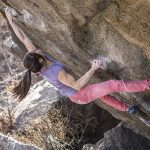A ranking of states in categories including total number of hunters and anglers, spending by sportsmen, jobs supported, taxes generated, number of days spent hunting and fishing and the most traveled to states by hunters and anglers has been released. Nationally, Texas is at the top of the pack. It is No. 1 in total hunters and anglers with 2.6 million; money spent at $6.6 billion, jobs supported with 106,000 and tax revenue generated with $1.3 billion. Florida lands the trophy for the No. 2 spot.
The new state-by-state rankings were compiled to complement a national report, “Hunting and Fishing: Bright Stars of the American Economy ~ A force as big as all outdoors,” which spotlights the immense impact hunters and anglers have on the economy at the national and state level, as well as a constituency.
What states have the most hunters and anglers? Texas is No. 1 (2.6 million), Florida No. 2 (two million), California No. 3 (1.7 million), Ohio No. 4 (1.48 million) and Pennsylvania No. 5 (1.41 million).
What states are the big spenders? Texas is No. 1 ($6.6 billion), Florida No. 2 ($4.8 billion), California No. 3 ($3.6 billion), Pennsylvania No. 4 ($3.5 billion) and Minnesota No. 5 ($3.4 billion).
What does this spending support? Jobs of course. Texas is No. 1 (106,000 jobs), Florida No. 2 (85,000), Wisconsin No. 3 (57,000), Minnesota No. 4 (55,000) and California No. 5 (53,000).
However, when it comes to who spends the most time in the field and woods, Pennsylvanians beat out Texans, spending 16 million days hunting compared to the 13.4 million that Texans spend.
Leaving a wide wake, Florida is out in front for the number of days spent on the water (41.5 million), compared to the No. 2 state, Texas, with 38.9 million days. Not surprisingly, Florida is also the No. 1 destination state for fishing, with North Carolina showing up at No. 2.
When it comes to the most traveled to state for hunting, Georgia is No. 1, followed by Colorado in the No. 2 spot.
It is a simple fact: hunting and fishing have a major impact on every state in the country. When you analyze the amount of money spent on these activities, as well as the jobs and taxes created, the impact becomes much more tangible. Every single state makes a contribution through revenue, taxes and jobs.
“The economic impact that sportsmen have on state economies should be a wake-up call to state governments to welcome and encourage hunting and fishing in their state,” commented Jeff Crane, president of the Congressional Sportsmen's Foundation. “The evidence is clear: states that encourage hunting and fishing by providing access and maintaining healthy habitats and fisheries benefit many times over through jobs and taxes as well as enjoying a boost to travel and tourism.”
When you compare spending by hunters and anglers to other sectors, their impact on the state's economy becomes more tangible. Here are a few highlights:
- Sportsmen support more than twice the jobs in Texas than Dell Computer Corp., Lockheed Martin, Electronic Data Systems and Dow Chemical Co. combined (106,000 jobs vs. 49,000).
- Sportsmen support more jobs in Florida than Disney World (85,000 jobs vs. 61,000).
- Pennsylvania sportsmen outnumber the combined populations of Allentown, Erie, Pittsburgh, Reading and Scranton two to one (1.4 million vs. 680,297).
- Michigan sportsmen annually spend more than the combined cash receipts for dairy, greenhouse/nursery, corn, soybeans and cattle — the state's top five agricultural commodities ($3.4 billion vs. $2.9 billion).
- Annual spending by Florida anglers is three times greater than the cash receipts from the state's orange crop ($4.4 billion vs. 1.2 billion).
- Annual spending by Wisconsin sportsmen is equal to the revenues of the state's dairy industry ($3.1 billion).
- Annual spending by California sportsmen is greater than the cash receipts of the state's grape crop ($3.6 billion vs. $3 billion).
“Spending by sportsmen benefits not only the manufacturers of hunting- and fishing-related products, but everything from local mom and pop businesses to wildlife conservation,” noted Doug Painter, president of National Shooting Sports Foundation. “And because most hunting and fishing takes place in rural areas, much of the spending benefits less affluent parts of the state.”
On the national level, 34 million sportsmen age 16 and older spent more than $76 billion in 2006, supporting 1.6 million jobs. If a single corporation grossed as much as hunters and anglers spend, it would be among America's 20 largest, ahead of Target, Costco and AT&T.
These statistics are impressive and, if anything, they underestimate the impact of sportsmen since they do not take into account the millions of hunters and anglers under 16 years of age or people who were not able to get out and hunt or fish in 2006. When sportsmen's spending is thought of in business terms and compared to other sectors of the economy, it is quite remarkable. From small rural towns scattered across our country's landscape to the bottom-line of Fortune 500 companies located in major cities, if you take away hunting and fishing you take away the equivalent of a multi-billion dollar corporation.
The new rankings were compiled to compliment a national report, “Hunting and Fishing: Bright Stars of the American Economy ~ A force as big as all outdoors,” which was produced by the Congressional Sportsmen's Foundation with support from the Alliance of Automobile Manufacturers, National Marine Manufacturers Association, National Shooting Sports Foundation and SCI – First For Hunters. The report and state rankings uses the results from the U.S. Fish and Wildlife Service's 2006 National Survey of Fishing, Hunting and Wildlife-Associated Recreation and statistics provided by the American Sportfishing Association and Association of Fish and Wildlife Agencies.















